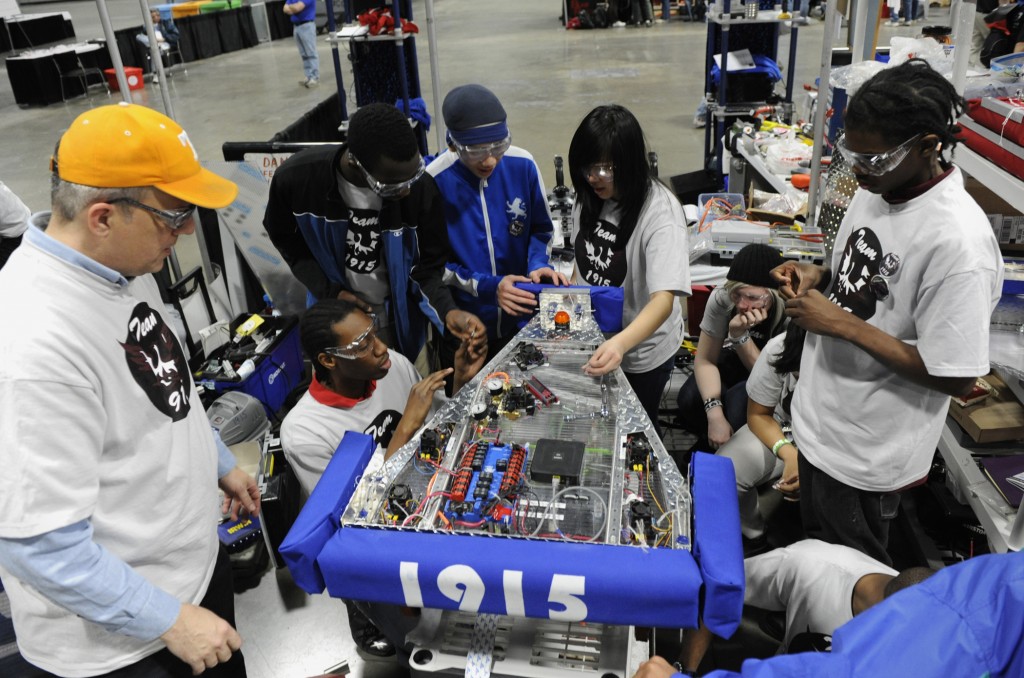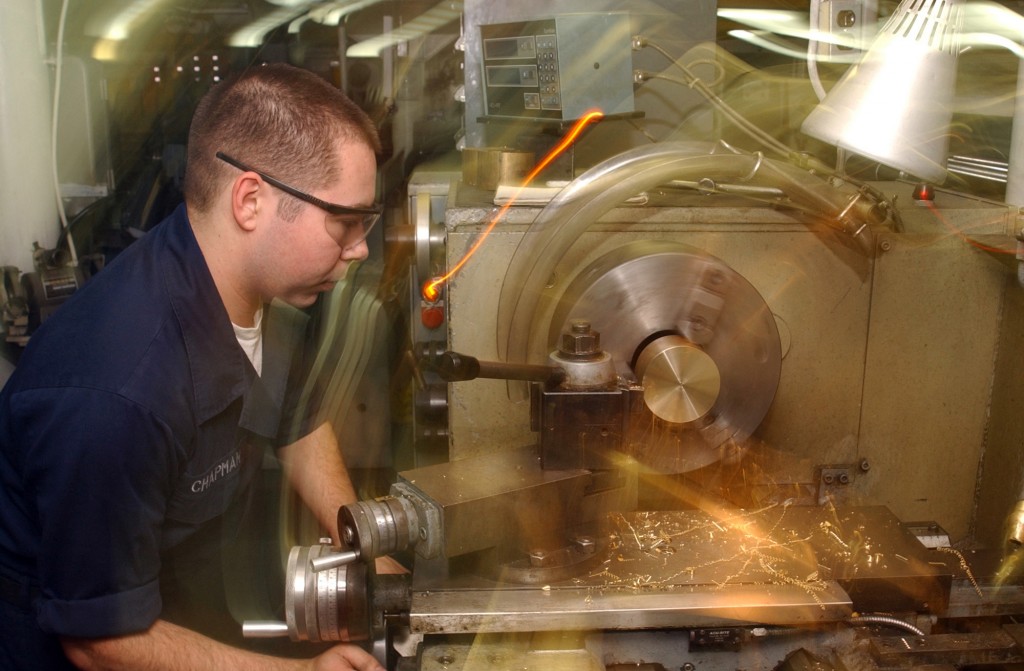Education is the hottest of topic this 2015 legislative session. Legislators must come up with additional funding for K-12 by the 105th day of the session, and with these new dollars comes the opportunity to attach reforms to address our system’s thorniest problems.

One of the major policy areas under the microscope this year is the “achievement gap,” referring to the discrepancy in educational attainment between students of differing socioeconomic backgrounds. While early learning has emerged as the primary tool for closing this gap, some Washington legislators have expressed interest in exploring a road less traveled: introducing career and technical education (CTE) into high schools. Yet despite this interest, CTE is noticeably absent from the achievement gap discussion.
In Washington, low income students make up 57 percent of total dropouts (up from 36 percent in 2005), according to the Office of the Superintendent of Public Instruction (OSPI). Senator Steve Litzow (R), Chair of the Senate Education Committee remarked, “There is no silver bullet to solving this problem. This has been going on for 20 years. We’re one of a handful of states where that gap is still growing. How do we close that gap?”
This session, Senator Litzow is supporting legislation coming through his committee regarding early learning programs and reducing class sizes, but he also thinks that Washington should move to make CTE a fixture of public high schools. His rationale is that high school has become increasingly college-track oriented at the expense of preparing students for how to survive in today’s economy while incentivizing them to complete high school.
Senator Litzow has a point. Public discourse about the purpose of K-12 education usually revolves around preparing kids for college, rather than turning high school diplomas into workforce credentials for students who aren’t planning to attend four-year schools.
Dropout statistics speak volumes about the value of a high school diploma. 53 percent of students who drop out do so during their senior year, meaning that for students who don’t see themselves going to four-year schools, the decision to stay in school for one more year is not worth the opportunities afforded by a diploma. The orientation towards university education is particularly detrimental to low-income students, who are statistically less likely to attend college. The college participation rate for low-income students in Washington was 28.5 percent in 2010.
Legislators like Litzow think that exposure to career and technical training would give high school relevance beyond being a stepping stone to a four-year school.
There is data supporting Litzow’s argument. According to the Association for Career and Technical Education (ACTE), which closely monitors CTE in all 50 states, 87 percent of Washington’s CTE students graduated — 10 percent above the state average. Additionally, results from a national survey conducted by ACTE revealed that 81 percent of dropouts say relevant, real-world learning opportunities would have kept them in high school.
 The issue of career readiness is important to the business community as well, who sees it as an opportunity to close yet another gap: the skills gap. The idea that high school should be about college readiness and career readiness is becoming more and more popular in light of growing worker shortages in high-paying industries like manufacturing and construction that threaten economic growth. Yet, despite the growing awareness about the importance of CTE and the support of heavyweights like Litzow, the issue remains dormant this legislative session. There are no bills related to CTE at the high school level.
The issue of career readiness is important to the business community as well, who sees it as an opportunity to close yet another gap: the skills gap. The idea that high school should be about college readiness and career readiness is becoming more and more popular in light of growing worker shortages in high-paying industries like manufacturing and construction that threaten economic growth. Yet, despite the growing awareness about the importance of CTE and the support of heavyweights like Litzow, the issue remains dormant this legislative session. There are no bills related to CTE at the high school level.
To be clear, CTE is not completely absent from Washington’s public schools. Washington offers CTE through high schools and “skill centers,” but the degree of accessibility is unclear. There are only 14 skills centers in Washington, serving 885 public schools. And, there is there is no publicly available list of schools that offer in-house CTE (OSPI claims that “most high schools offer a wide range of CTE classes”). The only real numbers available are from the U.S. Department of Education, which claims that 481,919 students (62% of which were high schoolers) participated in CTE during the 2012-13 school year.
Just how reliable are these numbers? The answer to that question is unclear as well, due to the state’s murky definition of CTE . On their website, OSPI includes a slew of AP courses in their statements about CTE, begging the question: What exactly does CTE mean in Washington? Looking at some of the course offerings for CTE at various school districts makes it clear that this confusion is widespread. Lake Washington School District, for instance, lists AP Psychology and AP Studio Art under CTE.
Not only has CTE seemingly disappeared from the conversation, but it has taken some hits in the past few years. According to a report published by the Washington State Apprenticeship & Training Council and OSPI in 2012, funding for the Running Start for the Trades (RSTT) program has dried up, despite the growing number of students participating. Also, last year, both Democrats and Republicans proposed cuts to CTE funding.
Although this issue has not come into focus in Washington this year, there seems to be a growing national movement for CTE in high schools. In 2014, 15 states made changes to their high school graduation requirements to further incorporate CTE in some way and 24 states in some way. Perhaps the example of other states, in combination with skills shortages, will create enough momentum to make CTE a key component of Washington’s strategy for closing the achievement gap.
